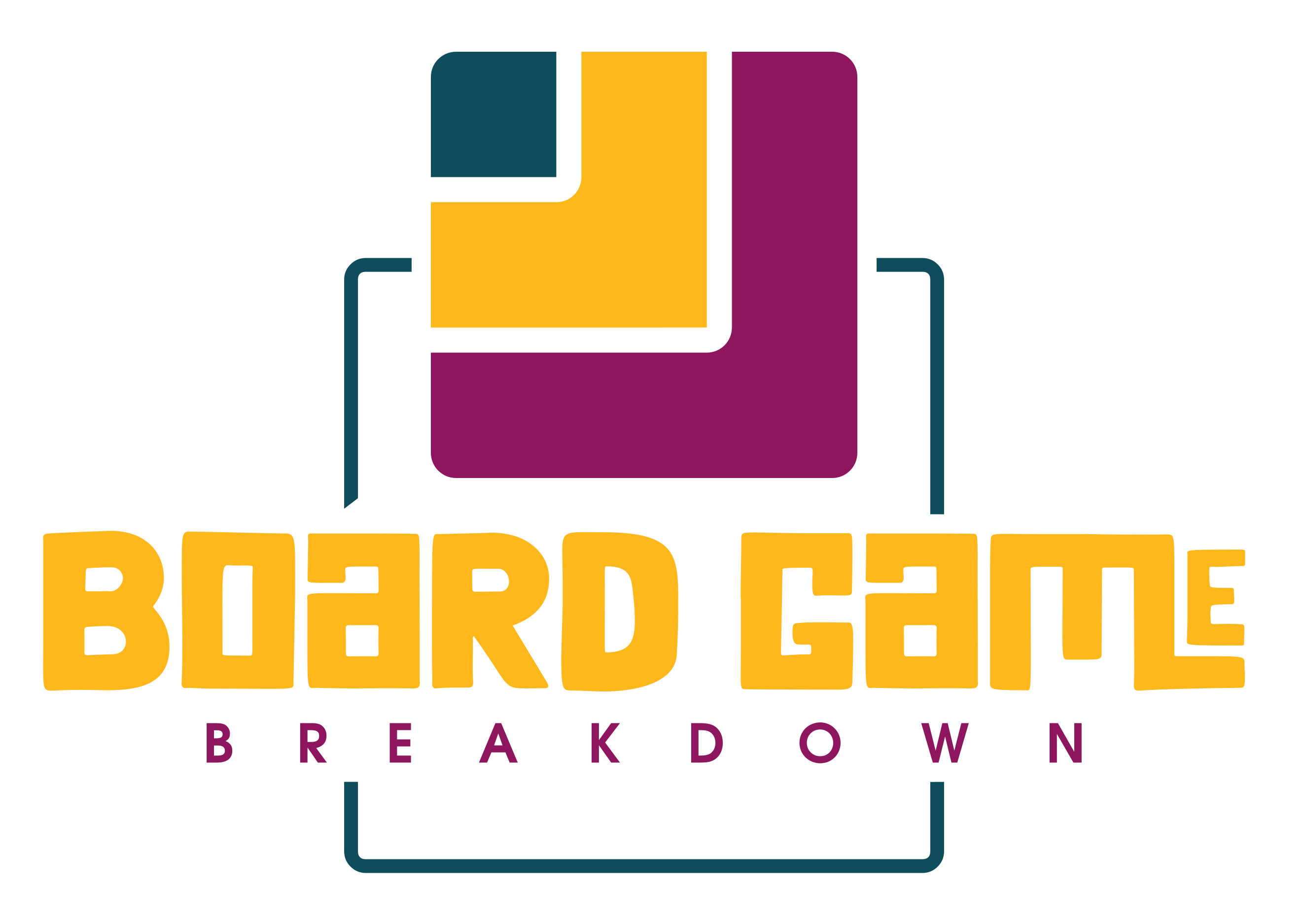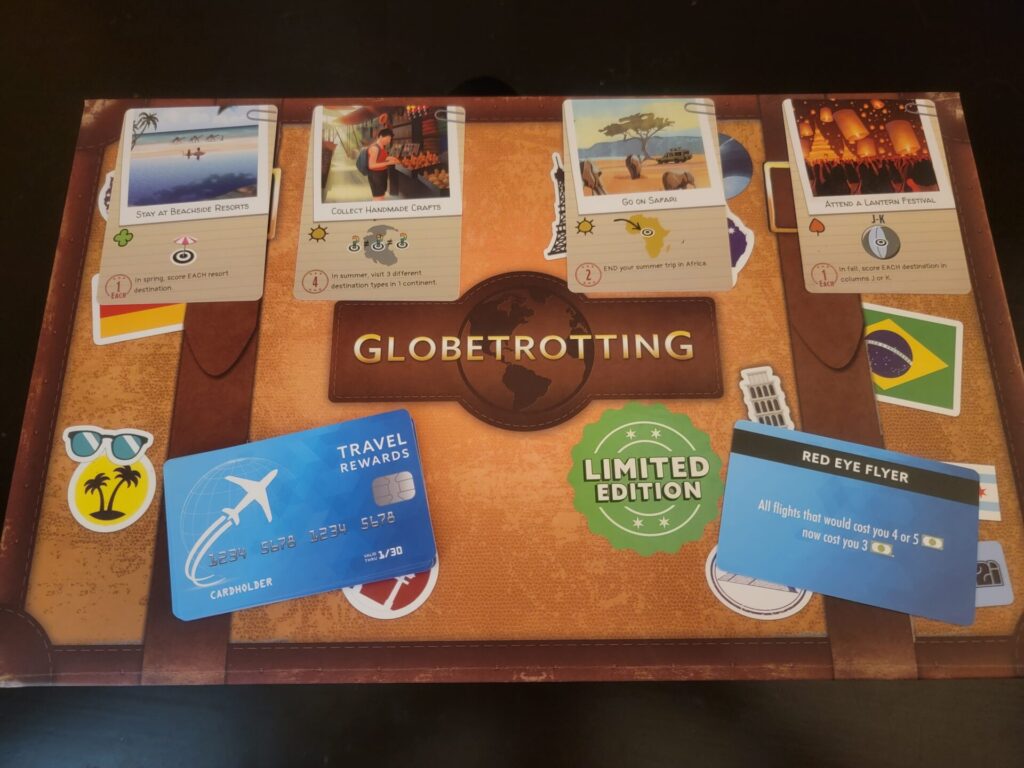
Name: Globetrotting
Year of Release: 2023
Player Count: 1 – 4
Playing Time: 30 Minutes
Designer: Jeff Chin & Andrew Nerger
Publisher: R2i Games
Primary Mechanisms: Contracts, Route Building, Simultaneous Action Selection
Weight (According to BGG.com): 2.00
Overview
R2i Games has become one of the publishers in the board gaming world that will always warrant, at least, a cursory glance at their upcoming projects. Ever since I saw that these two guys were giving out free copies of their game Crypt during the onset of the 2020 pandemic, I knew they were in the business of not only making games but making people genuinely with their products. Their next game, Canvas, brought a whole new slew of fans to know who they were, based on the creative use of transparent cards that can be layered to build a set of prize-winning paintings. Using this same creative drive, they’ve now launched Globetrotting, a route-building game that has players actually drawing out their trips on a plastic globe.
So, is Globetrotting going to be your next favorite destination or a one-way trip to the “For Sale” pile on your shelf?
Read on to find out!
Rulebook & Components
Globetrotting’s rulebook is a scant 11 pages that cover all there is to know about the game. It is clearly laid out, full of large pictures for examples, and even small callouts (or clarifications) to help players navigate the ins-and-outs while they play. Honestly, I don’t see any improvements that would need to be made to the rulebook, but to be fair, a game with a complexity as low as this should hit the rulebook out of the park every time.
Let’s move on to the components, starting with the one that everyone is interested in, the plastic Globe. It’s made up of two halves, that are easily nested into each other within the storage system. There are two things I want to call out with when it comes to the Globe: one good and one bad. First, the good: R2i has engineered a way where players only need to snap in the Map cut-out when they first receive the game, and it stays in place for future plays. This is great as you don’t have to fool with placing the Maps into each Globe before every play. Now, for the bad: the Globes just don’t snap together all that wonderfully. I find myself fighting with them every time and feel as if I’m almost going to break the two halves as I work them together. Maybe this is a “me” problem, but I do feel like this is a bit of a sore point with the game.
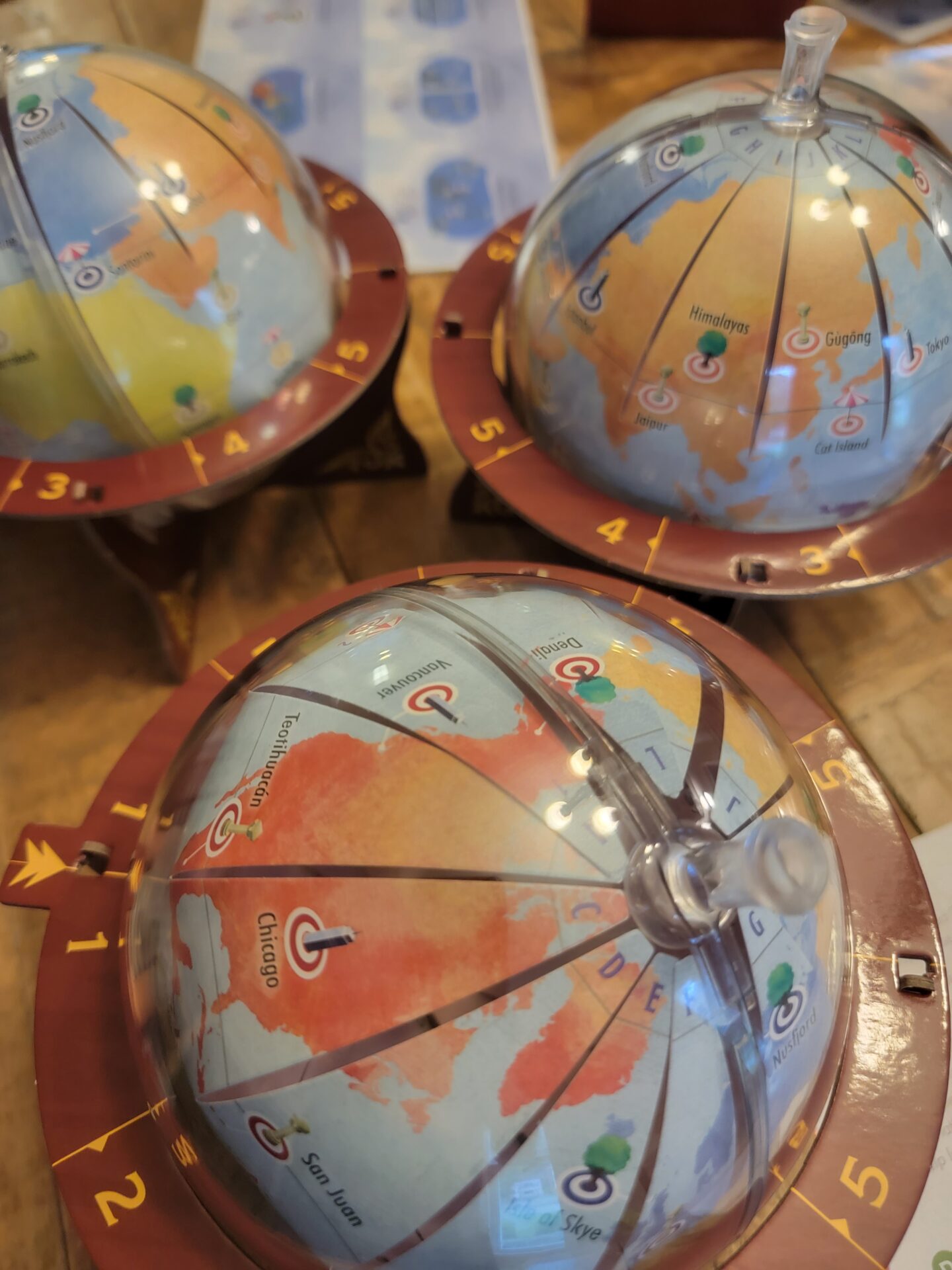
Next, let’s discuss the Destination Cards. These beauties remind me of the National Park cards found in the game PARKS. They are tarot-sized and feature beautiful renditions of each destination. Another thing to mention is that although some of the cards feature destinations you’d expect in a vacation-planning game, such as Maui or Easter Island, they’ve also added many locations that act as easter eggs for the modern board gaming world. Some of these include Carcassonne, Santorini, and Isle of Skye though I will leave the rest for you to discover. This a wonderful little wink to the board gaming world that puts a smile on my face.
The balance of the components is top-notch as well. The Bucket List Cards are made of wet-erase material so players can make notes on them, and they are wonderfully illustrated. I love the art style of this whole project and it definitely gives off “vacation of a lifetime” vibes. There are a multitude of other tokens or tiles that are included and are also similarly high-quality. I think my only real gripe is that the decision to go wet-erase doesn’t seem as easy nor clean as dry-erase games I’ve played recently (such as Rolling Realms) but this is minor and doesn’t affect my feelings of the game overall.
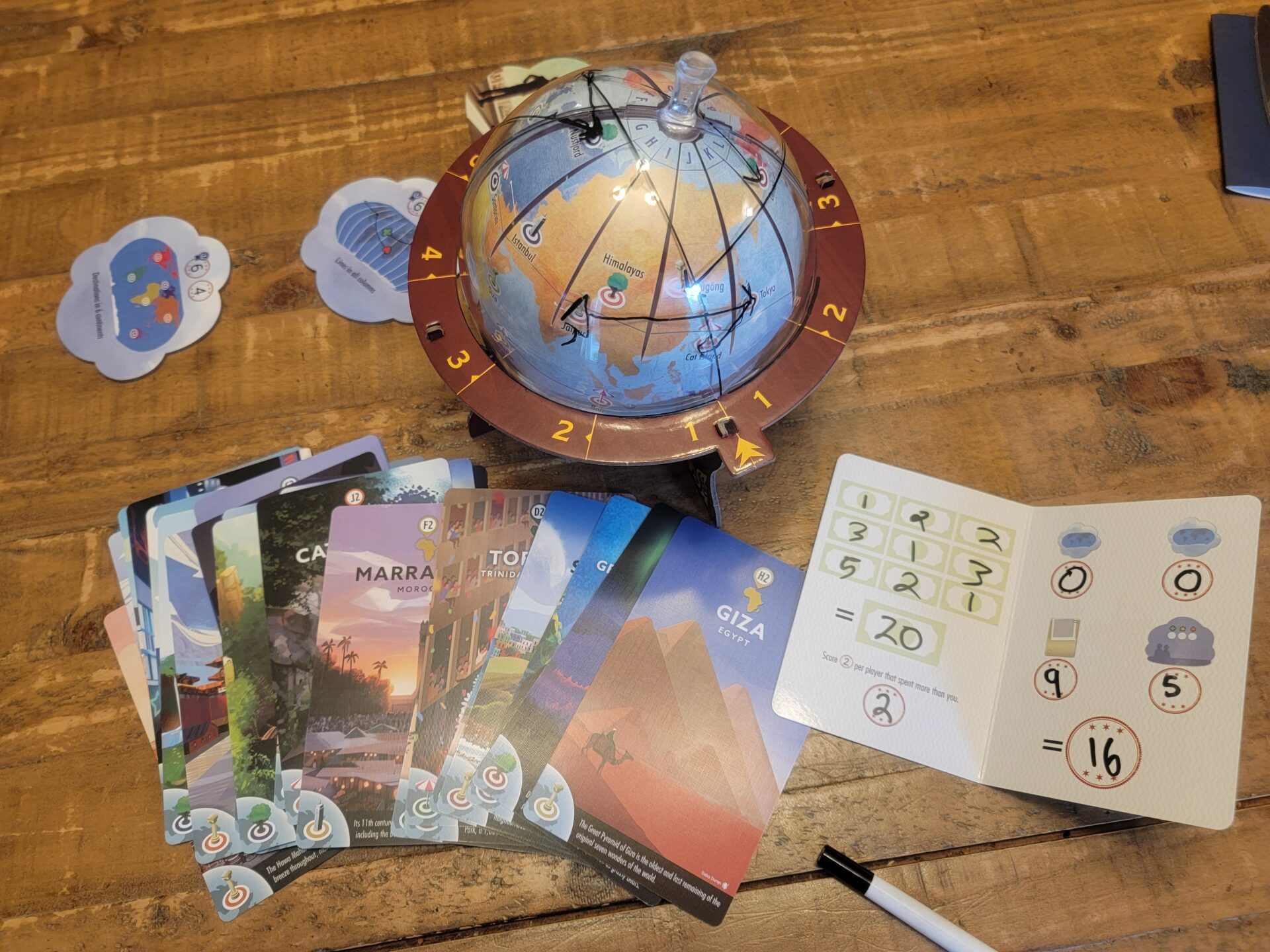
Setup & Gameplay
I won’t go into the aspects of setup too much, except to say it’s a breeze. If you want to know the exact details of setup, please visit our full tutorial video here. Gameplay in Globetrotting is quick and easy, especially as players are taking turns simultaneously. Players need to plan out three different trips in three different seasons: Spring, Summer, and Fall. Players will be constructing these trips over a series of nine turns, visiting a new destination on each turn. There are three destination cards unveiled each round and players will choose from one of these locations to plot onto their Globe.
The Globe sits in a stand with a ring emblazoned with a set of double arrows and then numbers ranging from 1 to 5 on each side. Once a destination is chosen, players will rotate their Globes, so the origin location is pointed at the double arrows, and then position the destination city on the horizontal axis of the ring. Then the player can trace a straight line, using the edge of the ring, to connect both locations. Lastly, the player will notate how much Airfare costs based on the last number passed on the stand’s ring. Once all players have completed this task, three new Destination Cards are flipped, and play starts again.
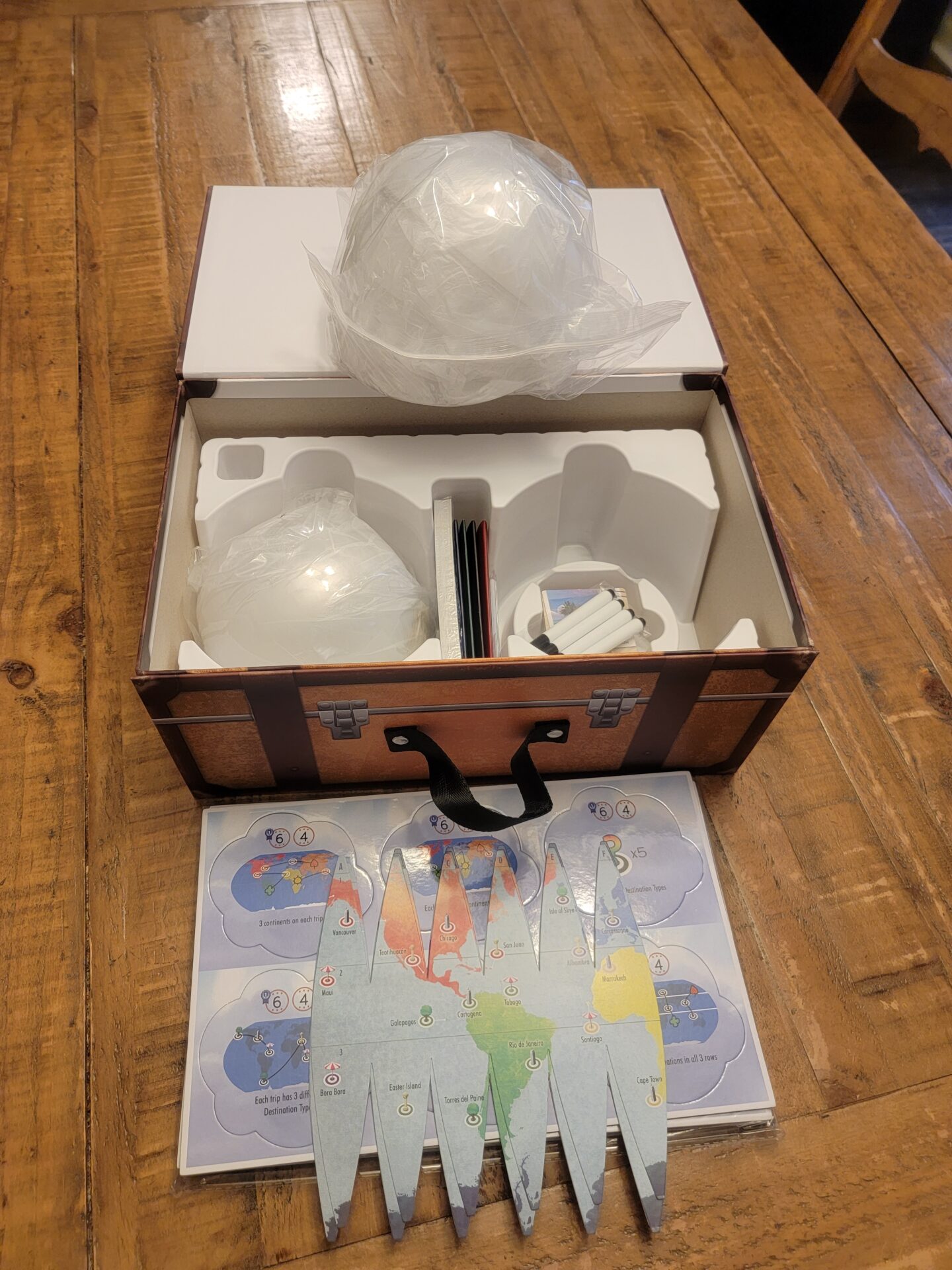
So, how does one decide on which destinations to choose? To a lesser extent, players are going to want to spend the least amount in Airfare by the end of the game, as they will be awarded bonus points for this accomplishment. Please note that the bonus points awarded are only two points so this will typically not sway the game one way or the other but is a nice buffer to have. That leaves the Bucket List Cards as the main decision driver for players. These cards give individual objectives to players, where they are tasked with meeting certain criteria in a specific season. Some examples of this would be to visit three locations in three different continents within the Spring trip or to have your Fall trip “double-back” on itself, ensuring that at least one line intersects with another line from that same trip. I like that beginners can play with one card for each season but then the difficulty can be increased by adding more cards and having a draft between players before the game starts.
As with many modern board games, players are given the opportunity to score many bonus points, and Globetrotting is no different. There are Global Objectives, that act somewhat like Bucket List Cards but for the whole table, as well as Festival Tokens that give you bonuses for picking Destinations and using them in a certain season that matches the pile the card was drawn from. These Festival Tokens are removed in a three- or four-player game and instead players will use the Travel Companion Tiles that give points two adjacent players who choose to go to the same Destination within the same season. While these are fun ways to grab extra points, none of it matches up to the fun of the main draw of planning out your trips in order to fulfill your Bucket List Cards.
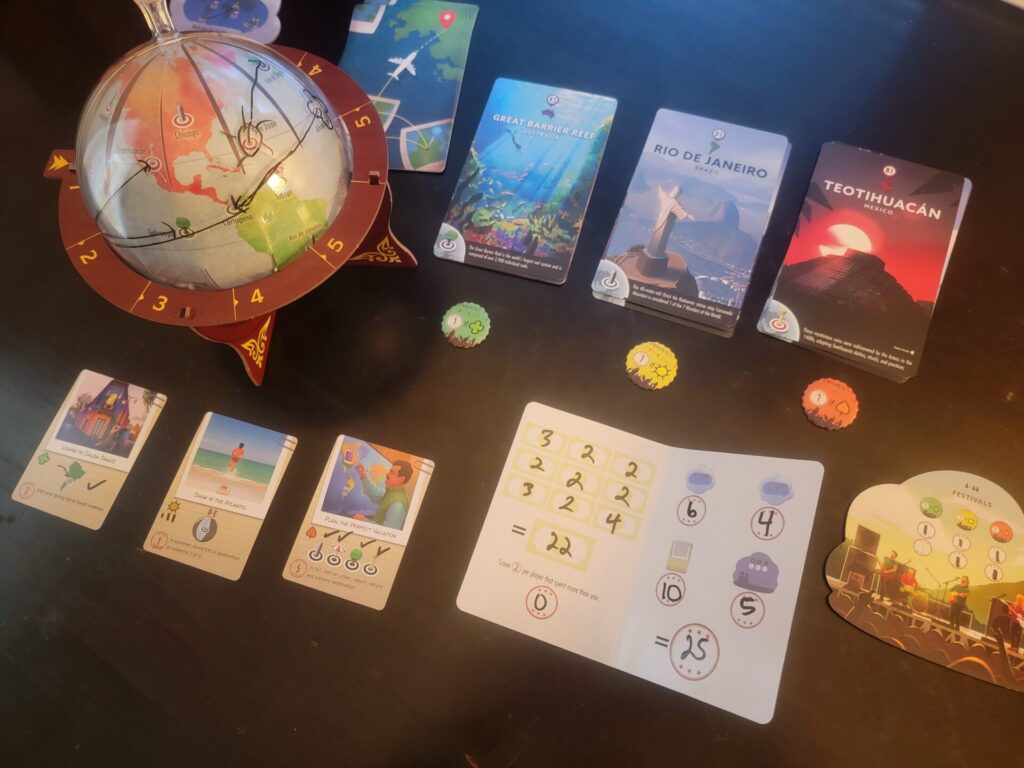
Solo Mode Thoughts
As they did in Canvas, the designers have created an AI player (this time named Abby) that a single player can play against. The overall gameplay is the same with one exception: when you choose a Destination Card, you look to the card to the right of it and note the number in its coordinates (from one to three.) This ends up being the Airfare cost that you log into Abby’s Passport. At game’s end, Abby scores the two points if she has spent less than you and is also automatically given certain points for the other objectives, basically scoring more points for every Bucket List Card you drew at the beginning of the game. While this is an “OK” way to get the game to the table when you have no available to play with, I wish Abby had a better way of deciding on which card she would take or even some way that she interacted and blocked you from taking certain Destination cards. Instead, it seems like a bit of a crapshoot on who ends up as the winner on the solo variant.
Conclusion
When I backed Globetrotting on Kickstarter, I expected a fun, relaxing, and creative light-weight game and that is exactly what I got. So far, my 7- and 10-year-olds have both played and have enjoyed it (though they did need some help figuring out how to maneuver the Globe correctly in order to trace a line via the stand’s ring.) At 30 minutes per play, and a relatively easy to understand ruleset, Globetrotting is a trip worth taking.
Rating
Ratings are based on 5 main criteria: rulebook, setup, components, art & graphic design, and gameplay. The first 4 criteria are rated 1 to 5 and the gameplay is rated 1 to 10. These scores culminate in an “overall satisfaction” score that is rated from 1 to 10. If the reviewed game has both a solo and multiplayer mode, I have assigned scores separately to give context to which mode we enjoy more.
Links
As an Amazon Associate I earn from qualifying purchases.
Kickstarter: Globetrotting by Road To Infamy — Kickstarter
